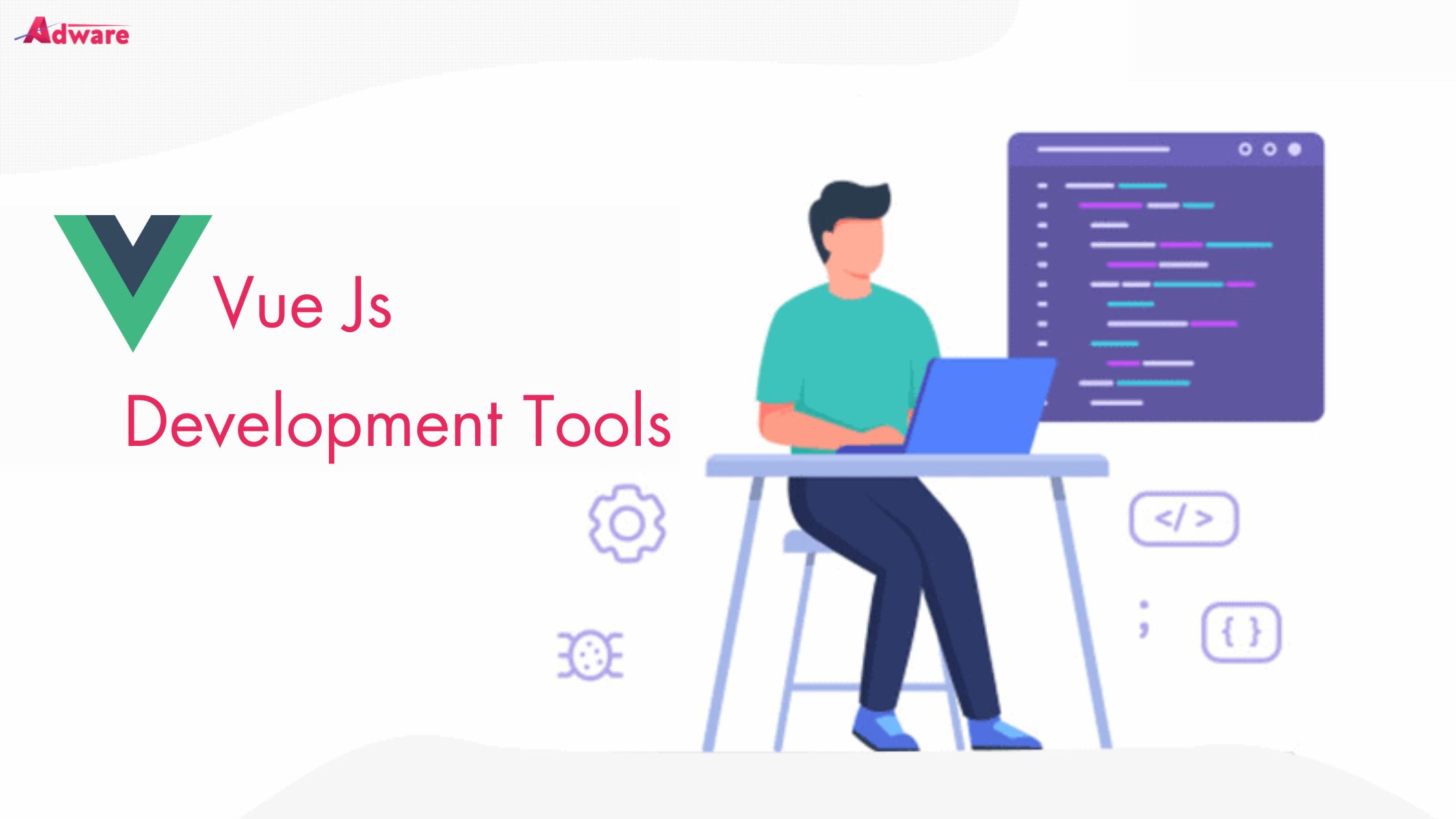In recent times, VueJS has transcended its origins as a mere advanced JavaScript framework to become one of the most widely embraced frontend frameworks. Its surging popularity can be attributed to its user-friendly nature, making it accessible for both beginners and seasoned developers alike. VueJS empowers developers to craft efficient and elegant user interfaces, and its appeal lies in the comprehensive documentation, gentle learning curve, and structure focused on functionality.
Whether you are just starting or have substantial experience, VueJS has positioned itself as a preferred choice. The vast and active open-source community surrounding VueJS has resulted in the creation of numerous development tools, making it a powerhouse for building user interfaces and single-page applications. Many businesses and startups opt to hire VueJS developers to capitalize on the manifold benefits it brings to the table.
When embarking on a VueJS project, the selection of development tools becomes pivotal. To aid in this decision-making process, we have curated a list of the top 8 VueJS development tools. These selections are based on criteria such as usefulness, uniqueness, and effectiveness, taking into account metrics like GitHub and Stack Overflow popularity, as well as star ratings. Before delving into this list, let's delve briefly into what VueJS is and why it has become indispensable in the realm of front-end development.
What is VueJS?
VueJS, a dynamic JavaScript framework, empowers developers to construct single-page applications for both web and mobile platforms. Praised for its efficiency, VueJS allows developers to swiftly modify content without the need for page reloads. It has garnered high satisfaction rankings among JavaScript frameworks, attracting adoption from major tech players like NASA, Adobe, Monito, Chess.com, and Gitlab for their diverse projects.
The utilization of VueJS development tools not only enhances development efficiency but also accelerates the delivery of products to production. The framework's growing popularity makes it a compelling choice for your next project, backed by its proven track record and the support of prominent industry players. Consider VueJS as a robust solution for crafting responsive and dynamic front-end experiences.
Best VueJS Development Tools For Use
1. Vue CLI
Similar to other JavaScript frameworks, VueJS relies on a CLI (Command Line Interface) tool that plays a crucial role in rapidly establishing project structures and deploying boilerplate code. The Vue CLI facilitates the swift creation of prototypes, allowing developers to showcase new features with ease.
Beyond its fundamental functionalities, the Vue CLI stands out by providing extensive support for various web development tools such as Babel, ESLint, TypeScript, PostCSS, PWA (Progressive Web App) features, Unit Testing, and End-to-end Testing. Notably, it seamlessly integrates with third-party plugins developed by the community, offering an additional layer of extensibility.
An outstanding aspect of the Vue CLI is its avoidance of the need for ejecting, a process commonly required in other frameworks. This unique feature grants developers a higher degree of customization compared to alternative frameworks. Noteworthy among its features is the Graphical User Interface (GUI), providing a user-friendly interface for both the creation and management of projects, enhancing overall convenience in the development process.
2 Bit for Vue
Bit presents an innovative solution for crafting the next-generation Vue component library within your team, addressing the challenge of sharing and collaborating on UI components across various repositories. This powerful tool facilitates the composition of UIs using shared components that can be independently built, versioned, and updated.
By leveraging the Bit. dev platform, you can effortlessly host and organize your components. Drawing an analogy, if a component library is akin to a CD music album, then Bit. dev serves as the iTunes, providing a centralized hub. Using the Bit CLI tool, components can be versioned and pushed from any local project to a Bit. dev collection, where they are meticulously documented, organized, rendered, and ready for import/installation.
Bit. dev streamlines the process for teams to search, render, install, and update components seamlessly from any new project. The platform boasts features like a rendered sandbox, automatic component documentation, and more, all available out-of-the-box.
Notably, Bit meticulously tracks dependencies for each component, ensuring it is versioned as a standalone unit of code. This approach guarantees that shared components are genuinely reusable by enabling developers to develop and test them in an isolated environment before exporting them to a Bit. dev collection from their local projects.
3. NuxtJS
Once you've set up VueJS for your applications, the initial step in streamlining your development process is to establish a robust boilerplate, sparing you the need to start coding from scratch. Among the various options available for creating boilerplates, NuxtJS stands out by empowering you to build diverse types of applications, including Single Page Applications (SPA), Progressive Web Applications (PWA), Server-Side Rendered (SSR), and Static Sites.
Nuxt accelerates your development workflow through its modular architecture, boasting over 50 modules that cater to various tasks such as integrating Google Analytics, unlocking PWA benefits, or generating a sitemap.
By incorporating best practices from both VueJS and NodeJS, Nuxt enhances your development experience. It includes a bundle analyzer and provides out-of-the-box performance tuning, aligning with the principles of efficiency and optimization. NuxtJS proves to be a valuable asset for developers looking to expedite their projects while adhering to industry best practices.
4. Vuex
Effective state management is a common challenge for many developers, as improper control can lead to unpredictable applications. Vuex addresses this issue by centralizing all state management functions and allowing state mutations in a controlled and predictable manner.
The core concepts of Vuex revolve around State, View, and Actions. The state represents the truth of the application, which is displayed to the user through the view. Actions, in turn, initiate changes to the state, creating a cycle of mutation.
In addition to providing a structured approach to state management, Vuex offers advanced features such as state snapshot export/import and zero-config time-travel debugging. These capabilities enhance the developer's ability to monitor, analyze, and troubleshoot the application's state, ensuring a more controlled and reliable user experience.
5. Vue-router
For those acquainted with other JavaScript frameworks, the concept of routing is likely a familiar one. Routing involves mapping application URLs to components, and Vue-router excels in this domain, providing robust support for a component-oriented router configuration.
Vue-router goes beyond basic routing functionalities by offering support for router params, querying, and wildcards, enabling intricate and flexible routing structures. Noteworthy features include transition effects, enhancing the visual appeal when navigating routes, and the inclusion of active CSS classes in links, providing a richer set of options compared to alternative frameworks.
An additional advantage of Vue-router lies in its flexibility regarding routing modes. Developers can choose between hash mode or HTML5 history, a decision that significantly impacts the user experience, especially in scenarios where users need to navigate back to previous pages. This flexibility ensures that Vue-router caters to a diverse range of application requirements, offering an optimal user experience.
6. Vuetify
True to its name, Vuetify seamlessly blends "Vue" and "Beautify," adding a touch of elegance to your applications. This library serves as a collection of meticulously crafted UI components, enabling the creation of visually stunning applications, even for those who may not possess design expertise.
Vuetify boasts a diverse set of over 80 components, all aligned with the Material Design Specification. Its Vue CLI plugin provides ready-to-use project scaffolding, simplifying the development process. Additionally, Vuetify comes with built-in support for Server-Side Rendering (SSR), enhancing its versatility.
The array of components offered by Vuetify covers a broad spectrum, including Banners, Alerts, Buttons, Badges, Progress widgets, Form inputs, and more. This comprehensive set empowers developers to build aesthetically pleasing and functional user interfaces with ease.
7. Axios
Axios has become the preferred third-party library for creating and managing AJAX requests among Vue developers. This choice solidified after the separation of "vue-resource," the once-official AJAX library of Vue, from its repository. Consequently, Axios gained prominence and widespread adoption.
Despite not being officially integrated into the Vue repository, Axios is highly favored for several reasons. It closely resembles its predecessor, is versatile across different platforms, includes TypeScript definitions, and supports request cancellation.
It's worth noting that when using Axios, especially if your server doesn't inherently support promises, you need to provide a polyfill for compatibility. This ensures seamless integration and efficient handling of asynchronous operations in your Vue applications.
8. Vue Apollo
A powerful tool for maximizing the capabilities of APIs, GraphQL allows you to efficiently query the specific data required for your application or function. One of the most convenient ways to leverage GraphQL in the Vue ecosystem is through Vue Apollo.
Vue Apollo simplifies the utilization of GraphQL by offering components that enable a declarative approach. At its essence, Apollo provides a Schema Language for the back-end application and a Query Language for the front end, facilitating seamless data exchange. Additionally, Apollo extends support for Server-Side Rendering (SSR), ensuring that HTML rendering can take place on the server side for enhanced performance.
Conclusion
I hope this compilation has provided you with insights into various VueJS development tools to enhance the spectacular nature of your project. If you are currently seeking VueJS development services from professionals well-versed in the tools above, consider hiring VueJS developers from our team. Our expertise lies in building user-friendly, lightweight, and fast interfaces, as well as creating beautiful applications.
Simply send us an email outlining your project requirements, and our team will promptly respond with a tailored solution to address your needs. In the meantime, explore and enjoy experimenting with these fantastic tools for your applications. For more information, please contact us now!




Comments (0)